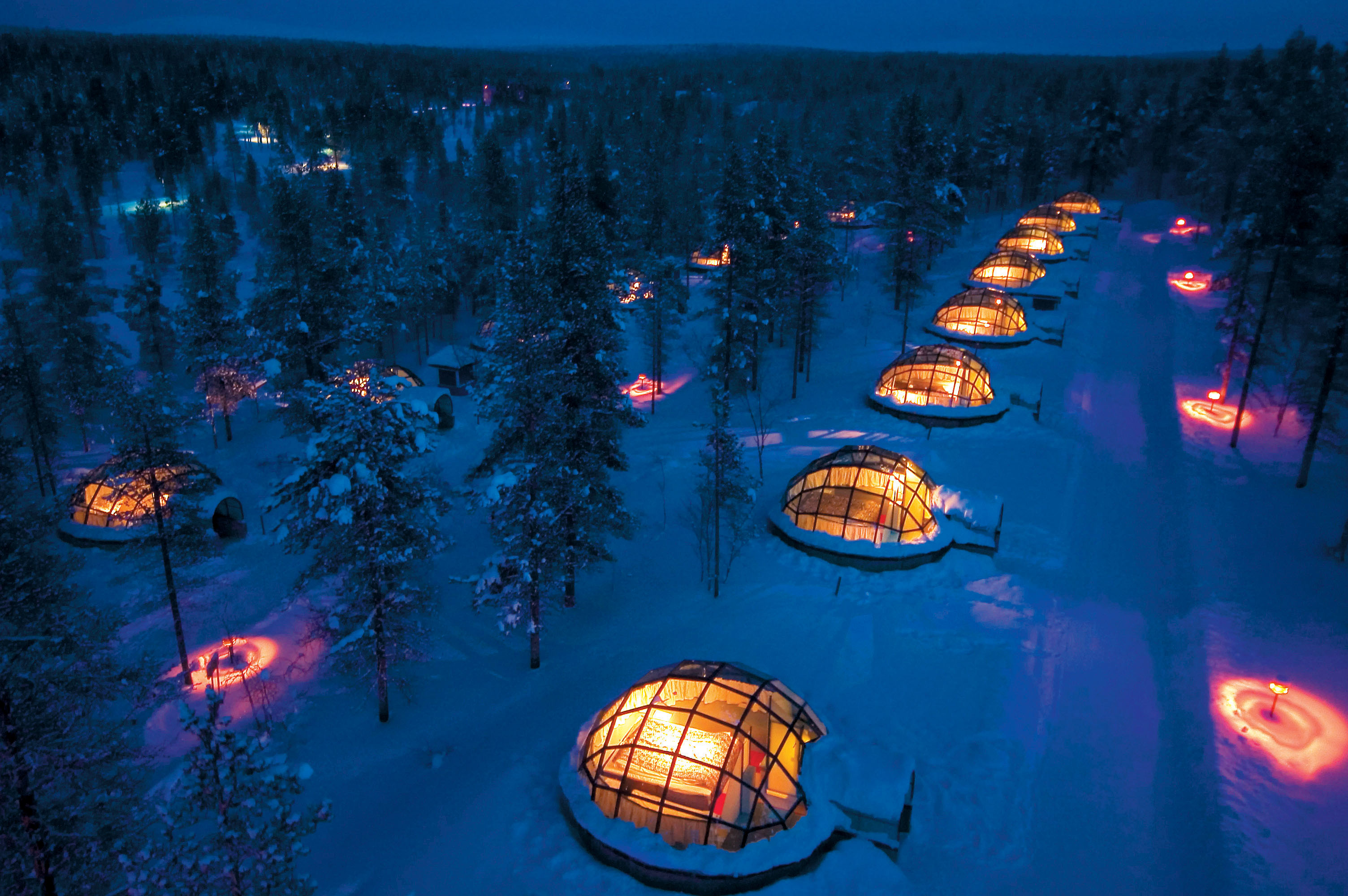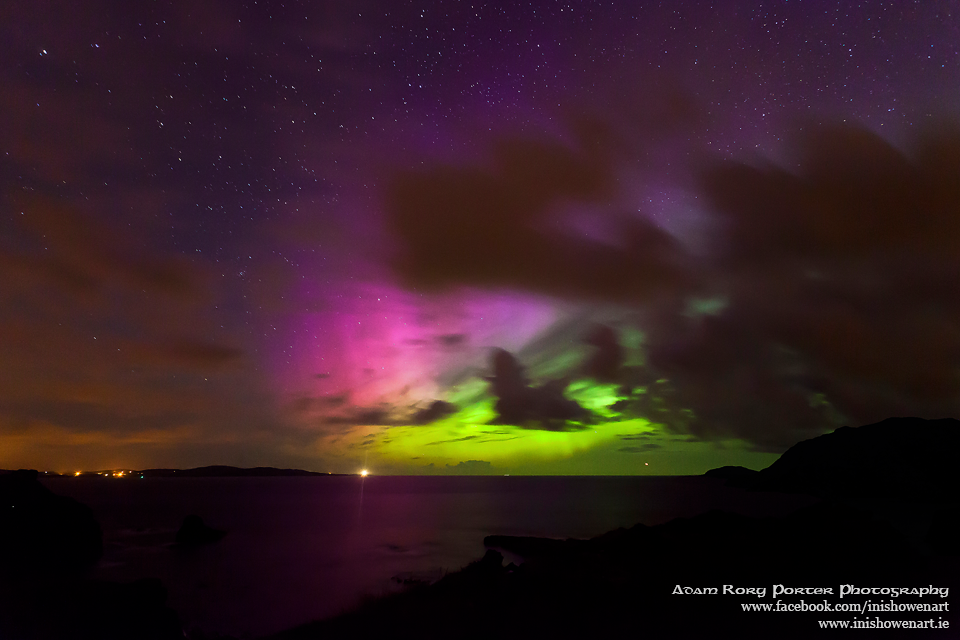Irish Independent, December 21 2014
It’s a marvelous time for a sky-dance. With the Northern Lights on the cusp of an 11-year solar cycle, this winter sees Aurora reaching her kaleidoscopic crescendo, making it the best time in a generation to witness one of the world’s most bucket-listed phenomena.
With origins steeped in Sami and Inuit folklore, the scientific lowdown of the Northern Lights is just as intriguing as its myths. “When clouds of energetic particles stream from the sun, they interact with Earth’s atmosphere,” says Conor Farrell of Astronomy Ireland. “This energy is transferred to the gases in the air, mostly oxygen and nitrogen, and in turn those gases re-release that energy in the form of lights, called aurorae.”
The beauty of this celestial sky-dance is that different gases cause different colours, and amid clear northern horizons this creates the waves and wisps of greens and ambers, vanilla and pinks that pulse and peter over the poles. So which are the best haunts to marvel at this ethereal event? We turned the spotlight on the ultimate places across the globe to catch the Northern Lights and discovered seven Aurora heavens which could deliver a northern night of your dreams.
Norway
Perched in the eye of the Aurora zone, the Norwegian city of Tromso bills itself as the Northern Lights capital of the world. Hurtigruten’s iconic coastal cruisers run a six-day voyage around the region’s hamlets, where passengers can hop off for snowmobiling excursions in the likes of Honningsvag or stock up on Babushka dolls in the curious Russian-border town of Kirkenes (thomascook.ie, €1,029pps).
Come nightfall — all 24 hours of it, if you travel in December — sightings of Aurora reach their peak as the vessel ventures beyond the postcard ports and out into the deep of the Polar night. Aboard ship, guests can enjoy the cabaret, knowing there’s a 24/7 on-duty lookout for the Lights (and icebergs), and any activity is announced directly by the captain via cabin intercom. Our viewing tip? Brave the –30°C temperatures and watch the action from the deck’s open-air Jacuzzi Arctic Pool.
Getting there: SAS (flysas.com) flies from Dublin to Tromso (via Oslo and Copenhagen) from €330 return.
Canada
An infinite expanse of Canadian wilderness peppered by the quirkiness of Francophone Canucks, Quebec and its winter skies are a real life Cirque du Soleil. The most intrepid of Aurora hunters can head north to the province’s Inuit homeland of Nunavik (you’ll have to fly as no roads go there). By staying south, lodge resorts such as Hotel Sacacomie (€88pps sacacomie.com) allow you to go wildlife-spotting by day.
For a greater guarantee, venture northwest to Yukon Territory where a five-day remote cabin tour outside Whitehorse (aurorabore alisyukon.com, €1,370 excluding flights) sees tourists chasing down the Northern Lights on snowmobiles and spending two nights outdoors watching Aurora. Bring your thermals.
Getting there: Air Canada flies from Dublin to Montreal QC via Heathrow from €502 return and to Whitehorse, YT (via Heathrow and Vancouver) from €842 (aircanada.com).
Scotland
Lying closer to the Arctic Circle than they do to London, it’s hardly a wonder that the Shetlands, Scotland’s farthest-flung islands, get their share of sky-shows. During the winter’s crisp and frosty nights, hikers venture beyond the tiny capital of Lerwick in the hope of a sighting. As with any Aurora adventure, it’s wise to try to sync up a visit with some local events, so consider a Shetland stay around Hogmanay (December 31) or during Up Helly Aa, a series of traditional fire festivals that takes place on the archipelago over January.
For something a little closer to home, head for the Scottish Highlands where remote locations and high elevations create the ideal conditions for light-spotting. Wilderness Scotland offers a five-day Winter Highland tour across the Inverness surrounds in the company of an Aurora expert (wildernessscotland.com, €765). Fingers crossed the fog abates.
Getting there: BA (ba.com) goes to Shetland via Glasgow from €294 return, Aer Lingus (aerlingus.com) flies to Aberdeen from €79 return.
Finland
With an appearance run of more than 200 nights a year, Finnish Lapland provides the most fitting stage for the ultimate Christmas lights display. Specialists Aurora Zone offer a six-night trip to this neck of the Nordic woods, taking in husky sledding and reindeer farm visits while also teaming up with the local Sodankyla Geophysical Observatory for the optimal lights locations (theaurorazone.com, €1,350 ex-Heathrow).
Farther north in Ivalo, Kakslauttanen is a magical igloo village where glass-domed capsules allow guests to experience the ultimate Aurora panorama (kakslauttanen.fi; €170pps). A good local rule of thumb is that if the stars are out, you may be in for a show. If it’s cloudy, head for the sauna. If all else fails, visit Santa Claus.
Getting there: Finnair (finnair.com) flies from Dublin to Rovaniemi and Ivalo (via Helsinki) from €470 return.
Iceland
Four days, four mates and a 4WD. Here’s a trip melding some indie MacGyver edge with all the symphonic pomp of a Bjork soundtrack. Discover the World is offering a three-night Killer Whales and Northern Lights self-drive tour of Iceland (discover-the-world.co.uk; €378 x 4 pps) where you can jeep along the coastline, savouring the wintry scenery en route. Your base is a cute self-catering guesthouse in Grundarfjordar (160km north of Reykjavik), but the real highlight is the chance to see a pod of orcas swimming into the herring-rich waters of Snaefellses Bay. Should Aurora also make an appearance, prepare for your senses to go into overdrive.
Getting there: Flights aren’t included, but an Aer Lingus (aerlingus.com) and Icelandair (icelandair.is) combo via the UK gets you there and back from about €320.
Southern Hemisphere
While the Northern Lights seem to steal most of the thunder, the Southern Lights, aka Aurora Australis, are also known to showboat an equally epic expo. Unfortunately, the phenomenon’s main activity belt lies over Antarctica, making the lights off-limits to all but the hardiest of research scientists and perhaps a few million emperor penguins.
But there are options elsewhere. Southern Chile and Tierra del Fuego in Argentina both offer good prospects of a sighting, but for Irish travellers the Australian island of Tasmania is the best prospect. Aurora-hunter Jonathan Esling says the low levels of light pollution in Tasmania make it the perfect place for Aurora viewing. “They can happen any time of year,” he says, “but you’ve the best chance of seeing one during Tassie’s long winter nights.” Don’t forget to take note that they’re in June, not December.
Getting there: Emirates flies to Hobart via Dubai and Melbourne from €1,015 return (emirates.com).
Donegal
Every Aurora has a silver-lining, and the good news is that you may not have to trudge to Tromso or yurt it up in the Yukon to catch the Northern Lights. Since images of fluorescent green skies cloaking the shores of the Inishowen Peninsula went viral last year, Donegal has become an unlikely niche destination for those seeking some domestic Northern Lights exposure.
So how realistic are your chances of an actual Aurora sighting in Ireland? Pretty good, according to Adam Rory Porter, the Donegal photographer whose pictures helped grab the original headlines. “While we may not get the levels of Norway here, on occasion it has been utterly spectacular, and a tank full of petrol is much more affordable than the thousands it costs to head to the northern latitudes of Europe.” Malin Head, Lisfannon Beach and Urris are Rory’s hotspots, and he recommends turning off your flash and using a tripod to help capture that National Geographic money-shot.




